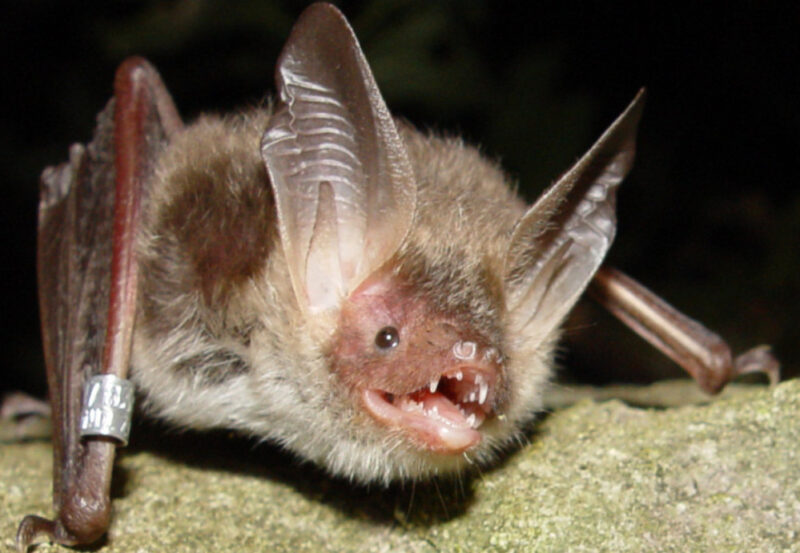Bechstein’s bat

Status
Native and rare
Population
21,800
Scientific name
Myotis bechsteinii
There is evidence that Bechstein’s bat was more abundant and widespread in prehistoric times, and its decline is probably due to the loss of ancient deciduous woodland since then. Today, it is one of Britain’s rarest resident mammals. Bechstein’s bat has long, distinctive ears (although not as long as those of the long-eared bats), which curl back slightly at the tips. They have a bare pink face and pale to reddish-brown fur. They emerge after dark and travel along features such as roads and hedges to feeding sites close to their roosts. They have broad wings that enable them to fly slowly, beneath the tree canopy, and to snatch insects from leaves and branches or from the ground. They will feed in cold and wet weather but not when it is windy. Bechstein’s bats are found throughout central Europe (where they were first described by the 19th century German naturalist whose name they bear) but are rare throughout their range.
Wingspan: 25 – 30cm
Weight: 7 – 13g
Lifespan: The maximum recorded age is 21 years
Reproduction
Mate between autumn and spring and groups of about 30 females form maternity colonies in late April/May. The young are born in June and early July and disperse by the end of August. The males are solitary.
Diet
Mostly moths, but also mosquitoes, small flies and beetles.
Summer roosts
Mostly natural holes in mature trees and sometimes bat boxes. They are rarely found in houses.
Winter roosts
It is thought that they spend the winter mainly in trees but they are occasionally seen in underground sites, especially limestone mines.
Habitat
Mainly woodland but also found in parkland, orchards and gardens.
Predators
Few natural predators.
Threats
Habitat loss and fragmentation. The species’ rarity makes it vulnerable to the loss of individual roost sites and foraging areas.
Ultrasound
Bechstein’s are very quiet bats and can be difficult to detect on a bat detector. They have short calls that peak at about 50kHz.
Status and conservation
GB Red List: Least Concern (LC); Endangered (EN) in Wales.
Population size and distribution
GB population 21,800. In 2005, just six breeding populations were known in England. Only one maternity roost and fewer than 20 hibernation roosts are known. The population trend is unknown. It is found mainly in southern England, Dorset, Wiltshire and Hampshire.
Did you know?
Like long-eared bats, Bechstein’s bats capture most of their prey by listening for noise made by insects.
